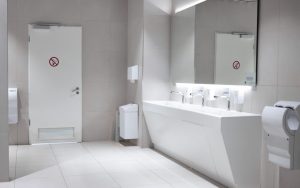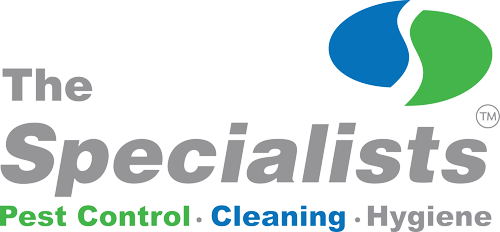
Maintaining a high standard of cleanliness in commercial washrooms is crucial for preserving health, safety, and user satisfaction. While a clean restroom may not be the sole reason for customers to remember your establishment, a dirty and poorly equipped one can quickly become a topic of conversation among friends and peers, potentially tarnishing your brand image.
According to Bill McGarvey, the director of training and sustainability at Philip Rosenau Co., “Restrooms are the primary source of complaints in a facility” (Cleanlink.com). By focusing on specific areas, you can not only promote personal hygiene but also ensure a clean and efficient restroom experience for all users. Let’s explore seven areas where you can enhance hygiene in your washrooms.
1. Effective Hand Hygiene
STEP 1: Ensure that soap dispensers are readily accessible and regularly restocked to encourage proper handwashing practices and maintain good hygiene. The Centre for Disease Control & Prevention estimates that 80% of all infections are transmitted through hands. Handwashing is crucial for fostering a healthy environment. Keeping hands clean is one of the most critical measures we can take to prevent illness and the spread of germs to others.
2. Hand Drying Options
STEP 2: Offer both paper towels and electric hand dryers to improve customer satisfaction. The debate between hand dryers and paper towels has been ongoing. While studies indicate that paper towels may spread fewer viral particles, electric hand dryers utilize touchless automatic sensors and eliminate paper waste, which can accumulate in bins.
3. Surface Care
STEP 3: Install seat sanitisers in cubicles, allowing users to wipe down toilet seats between uses. Given the high foot traffic in commercial washrooms, surface contamination is inevitable. In today’s germ-conscious society, providing tools for self-sanitization within cubicles can significantly enhance the restroom experience.
4. Waste Management
STEP 4: Ensure that waste bins are present in each cubicle and establish a regular waste removal schedule. Maintaining a clean and organized washroom involves promoting responsible user behaviour and providing convenient means for disposing of items that could otherwise end up on the floor or cause toilet blockages.
5. Female Sanitary Care
STEP 5: Make sure to provide sanitary bins and bag dispensers for female users. Recognizing the importance of feminine hygiene services and offering female users a safe, discreet, and hygienic solution should never be overlooked by facility managers and employers. Baby changing areas also require specialized hygiene services to remain clean and free from germs. Proper and efficient disposal of sanitary items is crucial in any environment to prevent the spread of germs and harmful bacteria.
6. Odour Control
STEP 6: Install odour-neutralising air fresheners. More than a third of office workers have experienced embarrassment due to unpleasant washroom odours. A malodorous washroom can be highly off-putting, but effectively maintaining a fresh-smelling environment can be challenging. Choose air fresheners that not only mask smells but actively work to eliminate bad odours. Ensure regular stocking and rotation of refills to maintain freshness.
7. Routine Deep Cleans
STEP 7: Incorporate monthly deep cleaning of your washrooms into your regular cleaning schedule. Performing a comprehensive deep clean at regular intervals is essential to address areas that may be overlooked during routine cleaning. This includes a thorough cleaning of walls, floors, grout, taps, equipment, urinals, toilets, and more, effectively removing any accumulated grime and bacteria.
If you are seeking a comprehensive washroom hygiene solutions partner, we have you covered for the supply of hygiene equipment and consumables, as well as maintenance and cleaning services. Contact us today for a consultation.

